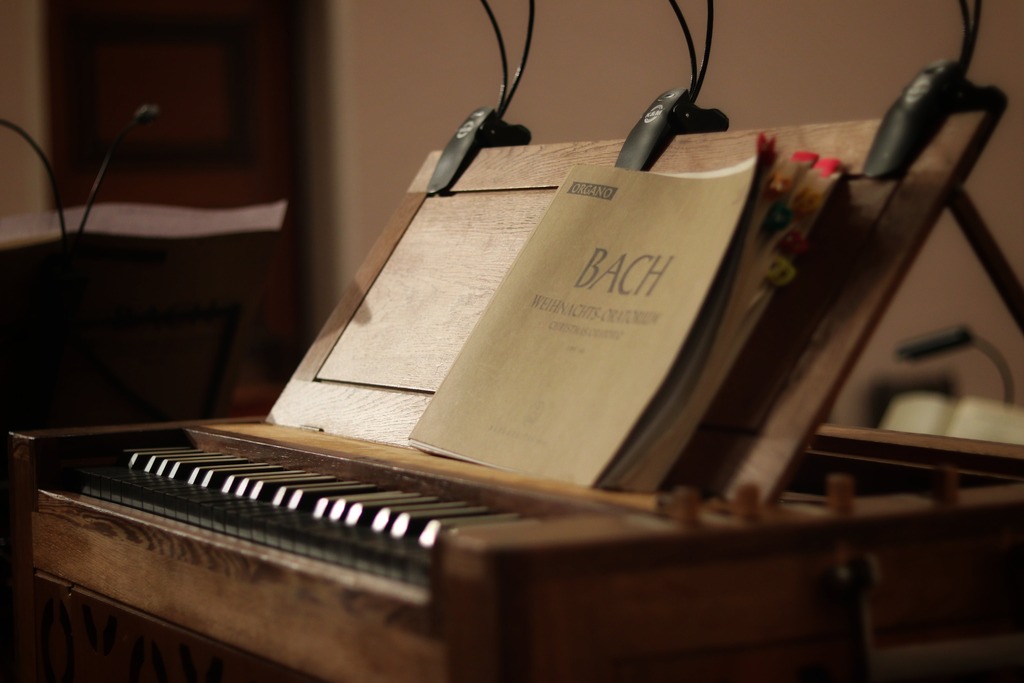In the realm of music theory, the concept of an octave plays a critical role. But precisely, what is an octave? In technical terms, an octave is the interval between one musical pitch and another that has double its frequency.
The octave is a foundational building block in music, offering a measurable and structured approach to understanding musical compositions. It is both a unifying and differentiating factor, crucial in the formation of scales and chords.
To fully understand the definition of octave in music, one must first grasp the concept of pitch. Pitch refers to the perceived frequency of a sound, indicating how high or low a note is. In the context of octaves, we are exploring a specific pitch relationship: a higher pitch that is exactly double the frequency of a lower pitch.

The interval fundamentals: understanding octaves
Before delving further into the definition of octave in music, it’s essential to understand the broader concept of intervals in music. An interval is the difference in pitch between two sounds. It’s a core element that musicians use to structure and understand melody and harmony.
In this context, understanding what an octave is becomes a specific inquiry into one type of interval. The octave stands out due to its unique properties – it’s one of the most harmonically consonant intervals, offering a sense of completeness and closure in musical phrases.
Octaves as a fundamental musical interval
Within the spectrum of musical intervals, the octave plays a pivotal role. An octave can be seen as a cyclical return to a familiar sonic starting point, providing both a sense of continuity and contrast in music. This interval is not just a theoretical concept; it has practical implications in composition and performance. For instance, in piano octave usage, the repetition of the same note at higher or lower octaves adds depth and richness to the music, creating a layered and complex sound.
Understanding the octave’s role in intervals is crucial for beginner pianists and seasoned musicians alike. It’s a concept that, once grasped, opens up a world of musical exploration and creativity. The piano octave, in particular, is a great example of how this concept is applied in a practical setting, allowing for a wide range of expression within a single instrument.
Dissecting an octave: composition and structure
To further understand the octave definition in music, it’s vital to explore its composition and structure. An octave is more than just a pair of notes; it represents a structured and measurable relationship within music. In an octave, the frequency of the upper note is exactly double that of the lower note, creating a unique sonic pairing that is universally recognizable in music.
When we consider how many notes in an octave, the answer reflects the intricacy of musical scales. Inside one octave, there are twelve half-steps or semitones in Western music. These semitones include both the natural notes (like C, D, E) and the sharps and flats that fall between them. This structured arrangement of notes is what gives the octave its distinct musical character.
Note lettering and octave identification
The role of note lettering in defining octaves cannot be understated. Each octave on a piano or any musical instrument is labeled based on the musical alphabet, which runs from A to G. This system of notation helps in identifying specific octaves and notes within those octaves, crucial for both learning and performing music.
For example, on a piano, the octave starting from middle C (C4) to the next C (C5) encompasses all the notes and semitones in between. This clear demarcation aids in the learning process, especially for those using piano learning apps like Skoove, where visual and auditory guidance is key to understanding musical concepts.
The full range of notes in an octave
Understanding the full range of notes in an octave is essential for musicians. This includes recognizing the number of semitones and whole tones and how they are arranged. This knowledge is fundamental, especially when it comes to playing scales and melodies, as it allows musicians to navigate the keyboard with precision and confidence
Octaves and scales: a harmonious relationship
The relationship between octaves and scales is central to understanding music composition and theory. Scales, which are sequences of notes in a specific order, rely on octaves to define their range and structure. This interplay is crucial in music, as it helps in organizing sounds in a way that is pleasing and coherent to the ear.
There are several types of scales, each with its unique way of dividing and utilizing octaves. For example, the Chromatic scale includes all twelve notes within an octave, while the Major and Minor scales select specific intervals within an octave to create different moods and tonalities.
Using the chromatic scale to divide octaves
The Chromatic scale is an excellent example of how an octave can be divided into its constituent semitones. This scale includes every note – both natural and accidental (sharps and flats) – within an octave. On a piano, playing a Chromatic scale means playing every key (white and black) from one note to its octave. This comprehensive use of the octave provides a full spectrum of sound and is foundational in understanding the construction of more complex scales.
Major and minor scales within octaves
In contrast, Major and Minor scales offer a more selective approach to dividing octaves. These scales are composed of seven notes, chosen from the twelve semitones in an octave, based on specific intervals. The Major scale is known for its bright and happy sound, while the Minor scale typically conveys a sadder or more melancholic tone. Understanding how these scales carve out their unique identities within an octave is crucial for musicians, as it influences the emotional and expressive quality of their music.
The exploration of scales within octaves is not just a theoretical exercise; it’s a practical tool for musicians. For those learning the piano, for instance, mastering the relationship between octaves and scales is a stepping stone to more advanced play.
Frequency and octave perception
Delving into the science behind what is an octave in music, it’s essential to consider the concept of frequency. Frequency, measured in Hertz (Hz), refers to the number of sound wave cycles per second. In terms of octaves, when a note’s frequency is doubled, it reaches an octave above the original note. This doubling creates a unique auditory perception that is recognized as an octave.
For instance, if a note has a frequency of 440 Hz (commonly referred to as A4 in music), the note an octave above (A5) will have a frequency of 880 Hz. This consistent doubling across the musical spectrum is what creates the framework for octaves in music, providing a predictable and harmonious structure.
Perception of octaves in sound and harmony
The way octaves are perceived in terms of sound and harmony is a fascinating aspect of music. Despite the frequency doubling, octaves are perceived not as entirely different notes, but as higher or lower versions of the same note. This perception is crucial in creating a sense of unity and coherence in music, allowing for the blending of different pitches without dissonance.
Octaves play a significant role in harmony, where different notes are played simultaneously to create chords. In chord structures, octaves can add depth and richness, reinforcing the root note while providing a fuller sound. This application is especially notable in piano music, where octave intervals are commonly used to add emphasis and complexity to compositions.
Octaves in keyboard music
The piano, with its clear and linear layout, offers a particularly illustrative example of octaves. A piano octave spans from one key to its corresponding key eight white keys apart, encompassing all the notes in between. This visual and tactile representation makes the piano an ideal instrument for learning and understanding octaves.
Playing octaves on the piano involves not just a theoretical understanding but also a physical one. It requires dexterity and spatial awareness, as pianists often stretch their hands to play octave intervals, creating a full and resonant sound. For beginners using piano learning apps like Skoove, mastering octaves is a crucial step in developing both technical skill and musical expressiveness.
The range of octaves available on different instruments
The range of octaves available on an instrument can significantly influence its sound and the music it can produce. Instruments like the piano have a wide octave range, allowing for a broad spectrum of musical expression. In contrast, some instruments have a more limited octave range but offer unique tonal qualities within their range.
Understanding the range of octaves available on your instrument of choice is essential for effective music making. It determines the repertoire you can play and influences your approach to music composition and arrangement.
Octaves in action: real-world examples
The use of octaves in music compositions is widespread and offers a rich field of study. Octaves are employed for various effects, from reinforcing a melody line to creating harmonic depth. In orchestral music, octaves might be used to layer the same melody across different instruments, creating a fuller, more resonant sound.
In modern pop and rock music, octave usage is often seen in the bass and melody lines, where the same notes are played in different octaves to add dimension to the song. This technique can be particularly impactful, offering a simple yet effective way to enrich the texture of a piece.
Analyzing octaves in famous musical pieces
Exploring famous musical pieces reveals the diverse ways in which octaves are utilized. For example, in Ludwig van Beethoven’s “Moonlight Sonata,” the use of octaves creates a haunting and resonant quality that has captivated listeners for centuries. In jazz music, the octave can be used in a more fluid and dynamic way, as seen in the improvisations of artists like Oscar Peterson, where octaves add a rhythmic and melodic richness to the performance.
These real-world examples demonstrate the octave’s versatility and its ability to convey a wide range of emotions and textures in music.
The universal language of octaves
In summary, understanding what is an octave in music is crucial for anyone learning or appreciating music. Octaves provide a foundational structure that is both practical and versatile, applicable across various musical genres and instruments. Their role in creating harmony, depth, and richness in music cannot be overstated.
For learners, especially piano students using tools like Skoove, mastering octaves is a key step towards musical proficiency. It’s a concept that enhances both technical skills and expressive capabilities, making it indispensable in the journey of music education.
The octave, in its simplicity and complexity, remains a vital component of music theory and practice, underlining the importance of a solid foundation in musical fundamentals for all aspiring musicians.
Author of this blog post:
Susana Pérez Posada

With over seven years in piano education and a deep passion for music therapy, Susana brings a unique blend of expertise to Skoove. A graduate in Music Therapy from SRH Hochschule Heidelberg and an experienced classical pianist from Universidad EAFIT, she infuses her teaching with a holistic approach that transcends traditional piano lessons. In her writings for Skoove, Susana combines her rich musical knowledge with engaging storytelling, enriching the learning experience for pianists of all levels. Away from the piano, she loves exploring new places and immersing herself in a good book, believing these diverse experiences enhance her creative teaching style.
Published by Lidya Ogan from the Skoove team















